San Salvador is the capital of El Salvador. The city is also the most developed city of El Salvador, the smallest country in Central America.
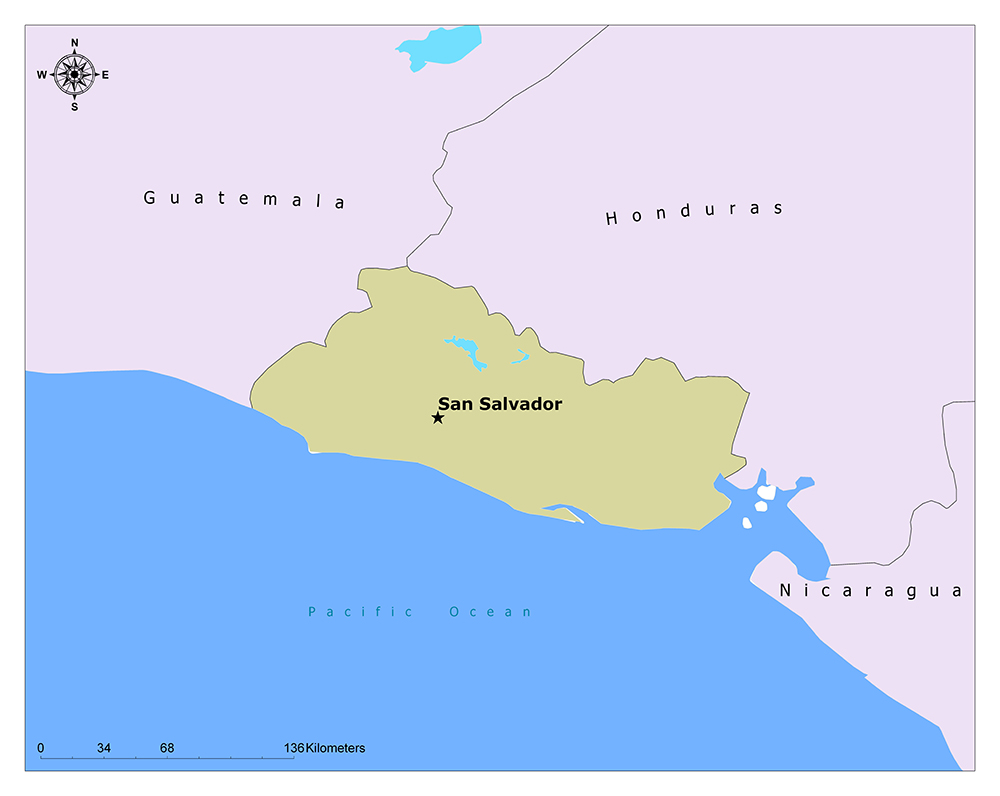
San Salvador is the political capital and the country’s cultural, financial, and educational center. San Salvador has undergone a process of modernization in the 21st century, with the construction of shopping malls, luxury housing developments, and modern office buildings.
Where is San Salvador?
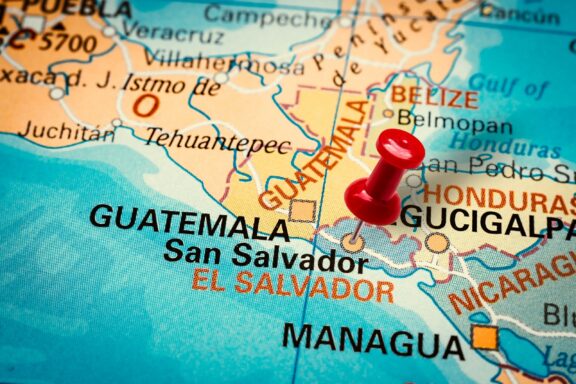
San Salvador is located in Central America. It’s in a valley called “Valle de las Hamacas” or “Valley of the Hammocks,” a nickname referencing the region’s frequent earthquake activity.
San Salvador is approximately in the central part of the country and lies approximately at 13.7 degrees North latitude and 89.2 degrees West longitude. It’s about 30-40 kilometers (or about 18-25 miles) from the Pacific Ocean, to which a modern highway connects it.
History of San Salvador
San Salvador, which translates to “Holy Savior,” has a long and complex history that is deeply intertwined with the more extensive history of El Salvador.
Before the arrival of the Spanish, the area that is now San Salvador was inhabited by the Pipil people, a Nahua-speaking group closely related to the Aztecs. The Pipil called the city Kuskatan.
Spanish conquistador Pedro de Alvarado arrived in the region in 1524, starting the process of Spanish colonization.
The city was officially established in 1525, though resistance from the indigenous people forced the Spanish to abandon the site temporarily. The Spanish successfully reestablished the settlement at a new location in 1528, where it remained until 1545.
In 1545, the city was moved to its present location after an earthquake destroyed the original site. It was declared the capital of the province of San Salvador by the Captaincy General of Guatemala.
In 1821, when Central America declared independence from Spain, San Salvador became the capital of the newly formed state of El Salvador within the United Provinces of Central America. When the federation dissolved in 1841, San Salvador remained the capital of the sovereign nation of El Salvador.
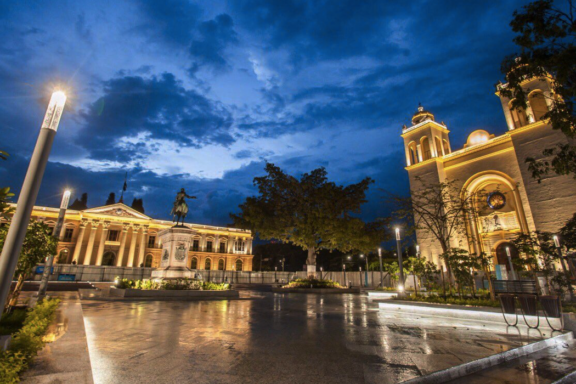
During the Salvadoran Civil War from 1980 to 1992, San Salvador was often the site of intense fighting and human rights abuses. The war ended with the Chapultepec Peace Accords, signed in Mexico City but had profound implications for San Salvador and all of El Salvador.
In the post-war era, San Salvador has continued to expand, despite struggles with poverty, crime, and inequality.
Natural Disasters in San Salvador
Throughout its history, San Salvador has been hit by several earthquakes due to its location in a seismic area – the most devastating in recent memory occurred in 1854, 1917, 1986, and 2001. Each time, the city has had to rebuild, contributing to its mix of architectural styles.
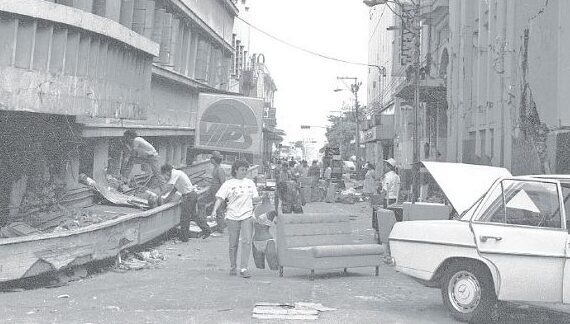
Over time, San Salvador transformed from a colonial city into a dynamic metropolis with fascinating attractions. Today, it’s a melting pot of various cultures, reflecting the influences of the indigenous Pipil, Spanish colonists, and more contemporary international interactions. This rich diversity is manifested in the city’s unique blend of cuisine, music, and vibrant festivals.
Features of San Salvador
San Salvador has a diverse blend of cultural, historical, and modern features that make it unique. It’s surrounded by green-tipped volcanoes and mountains that give the city a stunning backdrop.
Geography and Climate
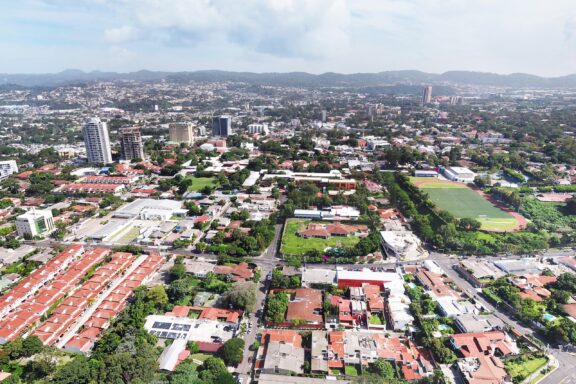
San Salvador’s location makes it prone to earthquakes, which have played a significant role in its history and development. Quetzaltepec is a prominent geographical feature of the area.
San Salvador experiences a tropical wet and dry climate. The dry season typically runs from November through April, and the wet season from May through October.
Temperatures are relatively stable throughout the year, with averages ranging from 22 to 30 °C (71.6 to 86 °F). San Salvador can experience heavy rainfall during the rainy season, occasionally leading to flooding.
Population
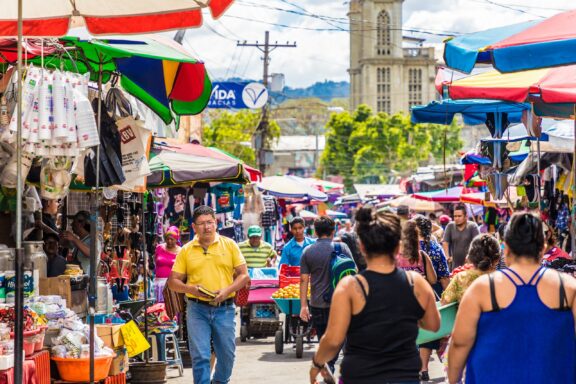
The estimated population of San Salvador city proper is around 570,000. Still, the Greater San Salvador area, which includes several municipalities, has a population of over 2.4 million, making it one of the largest urban areas in Central America.
The people of San Salvador are a blend of different cultures, largely descended from indigenous and Spanish roots. Spanish is the primary language spoken, and Roman Catholicism is the predominant religion, though significant Protestant communities and others exist.
Economy
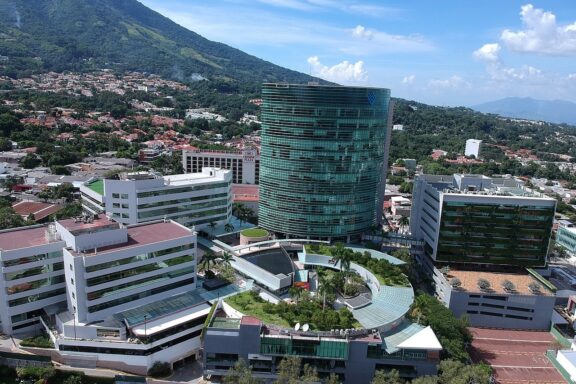
San Salvador is a significant participant in the economy of Central America. The city has many service sector businesses, including banks, insurance companies, advertising firms, retailers, and more. it’s also the headquarters for many multinational corporations operating in the region.
The manufacturing sector is another critical part of San Salvador’s economy. Industries include food processing, beverage production, textiles, clothing, and pharmaceuticals.
Retail is another significant industry, with the city hosting many local and international stores, modern shopping malls, and bustling markets. Tourism is also growing in importance, contributing increasingly to the city’s economy.
The city has made strides in recent years to attract foreign investment and stimulate economic development.
Things to Do and Places to See in San Salvador
San Salvador teems with an array of enticing activities and sightseeing opportunities. Let’s explore some of the city’s most sought-after destinations and attractions:
1. Visit the National Palace
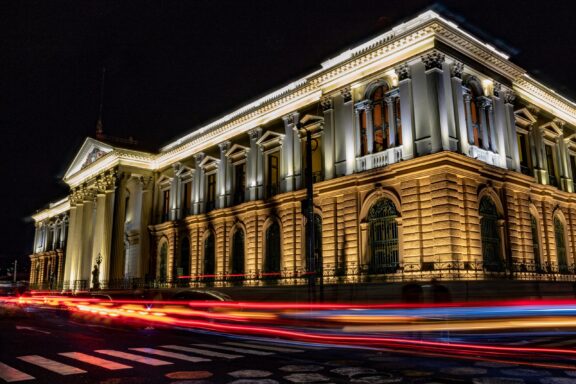
The National Palace, located in the heart of San Salvador, is a neoclassical gem that has stood the test of time. Constructed in the early 20th century, the National Palace is a four-story structure that once served as the seat of government, housing the presidency and various governmental departments.
Today, it’s a museum that offers a glimpse into the city’s history. You’ll find ornately decorated rooms, stunning stained glass windows, and a wealth of historical artifacts. It’s a must-see for history buffs and those interested in architecture.
2. Visit the Metropolitan Cathedral
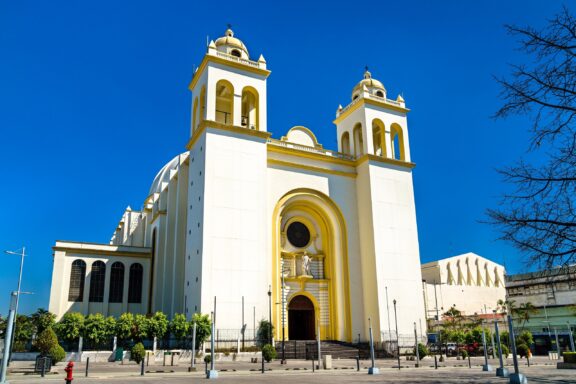
The Metropolitan Cathedral of San Salvador is a grand architectural achievement and an important religious site. This cathedral, which took over a hundred years to complete, is home to the tomb of Archbishop Óscar Romero, a vocal critic of violence and injustice assassinated during a mass in 1980.
The Metropolitan Cathedral of San Salvador is the principal church of the Roman Catholic Archdiocese of San Salvador and the seat of the Archbishop of San Salvador.
The cathedral’s interior blends modern and traditional elements with beautiful stained glass, murals, and an imposing altar.
3. National Museum of Anthropology Dr. David J. Guzmán (MUNA)
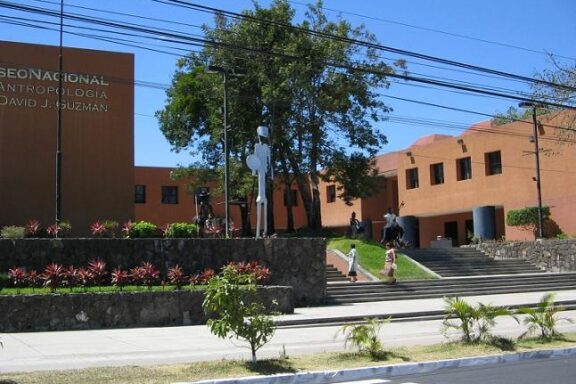
MUNA offers a comprehensive overview of El Salvador’s rich cultural history. Here, you’ll find a range of exhibits from the pre-Columbian era to the present day. Highlights include an extensive collection of Mayan artifacts, historical documents, ethnographic exhibits, and folk art.
The museum is named after Dr. David J. Guzmán, a significant Salvadoran scholar, and it offers both temporary exhibitions and permanent displays.
4. Marte Museum (Museo de Arte de El Salvador)
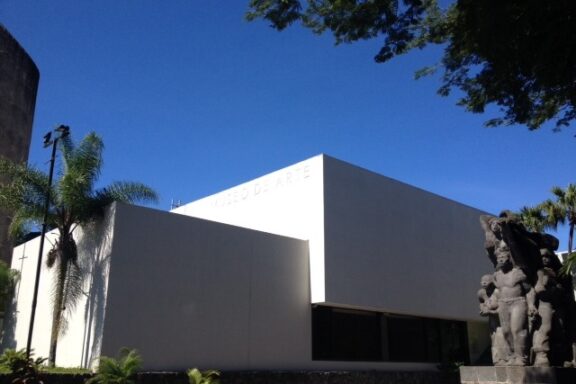
The MARTE Museum showcases an impressive collection of national and international art. Established in 2003, the museum features art from the mid-20th century to the present, emphasizing Salvadoran art.
The museum often hosts temporary exhibitions, workshops, and educational programs. This modern, air-conditioned building is a haven for art lovers.
5. Parque Nacional El Boquerón
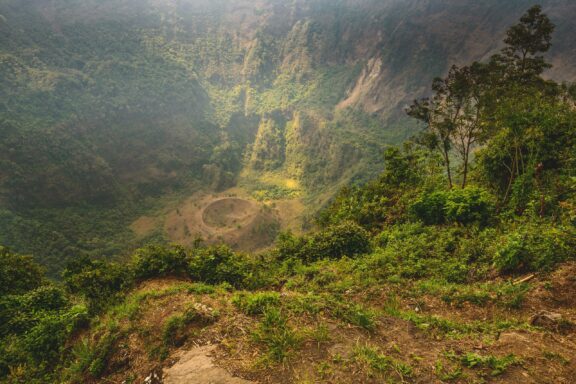
Situated on the San Salvador Volcano, Parque Nacional El Boquerón offers visitors the chance to explore one of El Salvador’s most impressive natural landscapes.
The park features a trail leading to the rim of the volcano’s crater, El Boquerón. The trek provides breathtaking views of the surrounding landscape. The park is home to various flora and fauna, making it a haven for nature lovers.
The area’s fertile volcanic soils have contributed to the lush coffee plantations surrounding the park, which are also worth a visit.
6. Joya de Cerén Archaeological Site
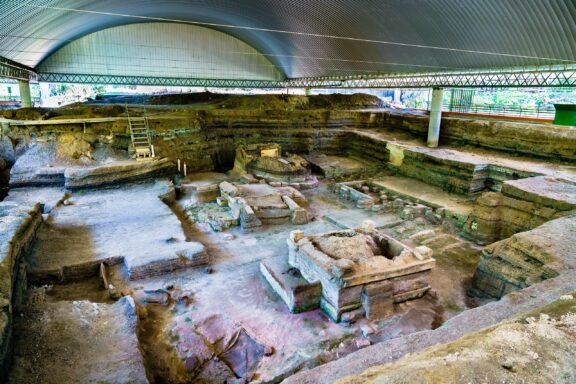
Located just a short drive from San Salvador, the Joya de Cerén Archaeological Site offers a glimpse into the everyday lives of the Maya people. The site was remarkably preserved under a volcanic ash deposit from an eruption of the nearby Laguna Caldera volcano in AD 600.
Designated as a UNESCO World Heritage Site, it’s often called the “Pompeii of the Americas.” Visitors can see the remains of homes, workshops, and even a frozen community sauna.
7. Wander Around Plaza Libertad
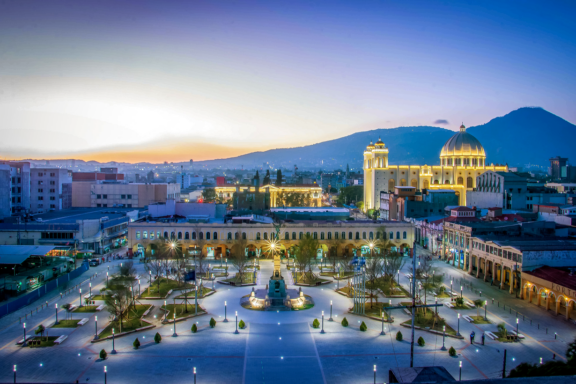
Plaza Libertad, also known as Liberty Plaza, is one of the oldest and most historic public squares in San Salvador, El Salvador. Centrally located in the city’s heart, it has witnessed numerous significant events in the country’s history.
It’s home to several important monuments, including the Monument to Liberty, commemorating El Salvador’s independence. Surrounded by colonial architecture, the plaza is a familiar gathering spot for locals and tourists, offering a vibrant atmosphere filled with cultural and historical intrigue.
8. Lake Ilopango
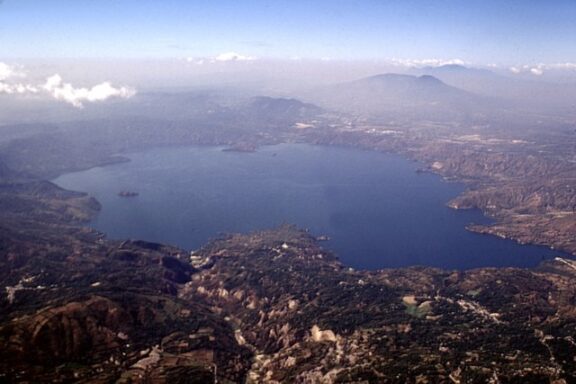
Lake Ilopango, located east of San Salvador, is a large crater lake formed during a massive volcanic eruption around 450 AD. The lake is a popular recreational destination, offering boating, fishing, and water sports activities. Its clear blue waters and surrounding mountains make it a perfect place for relaxation and adventure.
The lake has four islands – Islas Quemadas, Cerro Grande, Cerro Chino, and Isla Teopán. Isla Teopán, the largest, was once home to an ancient Mayan site and is currently home to a monastery.
The region surrounding the lake is rich in history and archaeology, with several pre-Columbian archaeological sites. It’s also home to several vibrant communities that have a long history of fishing and agriculture.
9. Monument to the Divine Savior of the World
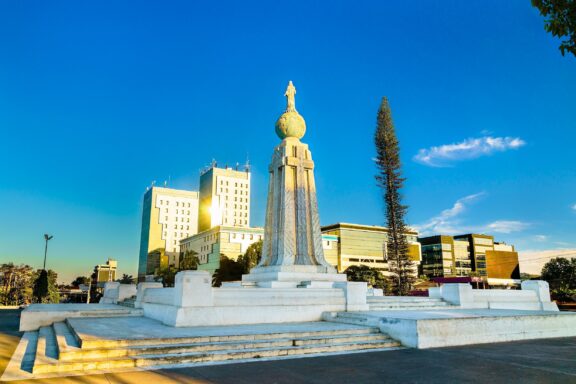
The Monument to the Divine Savior of the World is one of the most iconic landmarks in San Salvador. Located on Plaza El Salvador del Mundo, the monument features a statue of Jesus standing atop a globe on a tall pedestal.
This monument is a popular tourist attraction and a focal point for many local events and celebrations, especially during the August festivities dedicated to the Divine Savior of the World.
10. Archeological Site San Andrés
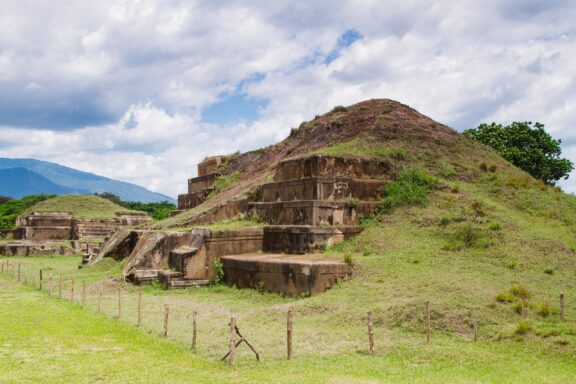
San Andrés is an important archaeological site approximately 45 minutes from San Salvador. Once a complex Mayan settlement and trade center, it was occupied from about 900 BC to 1200 AD.
Today, visitors can explore the partially restored acropolis, various structures and pyramids, and a small museum showcasing artifacts unearthed from the site. The site offers a unique insight into the ancient Mayan civilization.
Frequently Asked Questions
What is the best time to visit San Salvador?
The best time to visit San Salvador depends on the weather. The dry season (November to April) is often considered ideal because the weather is pleasant, and there’s less chance of heavy rain disrupting your plans.
Is it safe to travel to San Salvador?
Travelers are advised to take caution when visiting San Salvador due to crime. It’s essential to stay in well-traveled areas, avoid unnecessary travel at night, and be aware of your surroundings. Always check current travel advisories from reputable sources before making travel plans.
What is the local cuisine like in San Salvador?
Traditional Salvadoran cuisine is a blend of indigenous and Spanish influences. Staple dishes include:
• Pupusas
• Tamales
• Yuca frita
What is a must-try dish in San Salvador?
While in San Salvador, trying pupusas is a must. This traditional Salvadoran dish is made of thick tortillas, usually filled with cheese, beans, or meat, and is often served with Curtido (a pickled cabbage slaw) and tomato salsa.
What is the currency in San Salvador?
As of 2001, the official currency of El Salvador, including San Salvador, is the U.S. dollar.
How can I get around in San Salvador?
San Salvador has various transportation options, including buses, taxis, and car rentals. Public buses are the most common form of transport, but taxis or rental cars are preferred for more comfort and safety. There are also ride-hailing services like Uber.
What cultural customs should I be aware of when visiting San Salvador?
Salvadorans are generally warm and friendly. It’s customary to greet with a handshake or a kiss on the cheek among friends. Spanish is the dominant language, so knowing some basic Spanish phrases can be helpful. Punctuality is not heavily emphasized in social settings, but it’s considered polite to be on time for business or formal events.
Final Thoughts
San Salvador’s rich blend of historic charm and modern amenities offers a unique travel experience. Despite facing challenges, the city’s vibrant culture, delicious cuisine, and numerous attractions create a compelling allure.
There’s something for everyone, from exploring the artifacts and archeological sites to feasting on traditional pupusas and venturing into breathtaking landscapes. Coupled with the warm, welcoming nature of its people, a visit to San Salvador can provide a deep and enriching insight into the heart of El Salvador.
Image Sources and Copyright Information
- image-33: © Mappr
- Map Pin on San Salvador Location: © andriano.cz/Shutterstock
- Evening View of Plaza Gerardo Barrios in San Salvador: © Idea SV/Wikimedia | CC BY-SA 4.0 International
- Street Aftermath of San Salvador Earthquake 1986: © Guasinay50/Wikimedia | Public Domain Mark 1.0
- Aerial View of San Salvador Cityscape: © GlobalVision 360/Shutterstock
- Bustling Street Market with Colorful Umbrellas and Shoppers: © Chrispictures/Shutterstock
- World Trade Center San Salvador Aerial View: © JMRAFFi/Wikimedia | CC BY-SA 4.0 International
- Illuminated National Palace at Night with Traffic Streaks: © Roykings9/Shutterstock
- Metropolitan Cathedral in San Salvador: © Leonid Andronov/Shutterstock
- Exterior View of the National Museum of Anthropology, El Salvador: © Guanaco152003/Wikimedia | CC BY-SA 3.0 Unported
- Modern Art Museum Building under Blue Sky: © MARTE El Salvador | CC BY-SA 4.0 International
- Verdant Volcanic Crater Overlook: © John Crux/Shutterstock
- Archaeological Excavation Site Under Protective Shelter: © Leonid Andronov/Shutterstock
- Dusk at Plaza Libertad in San Salvador: © Idea SV/Wikimedia | CC BY-SA 4.0 International
- Aerial View of Lake Ilopango: © Lie Siebert/Wikimedia | Public Domain Mark 1.0
- Monument to the Divine Savior of the World: © Leonid Andronov/Shutterstock
- Ruins of San Andrés in El Salvador: © Milosz Maslanka/Shutterstock